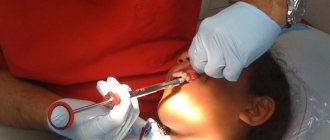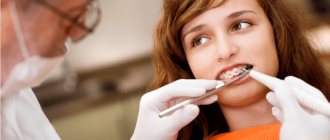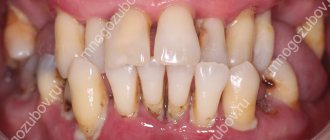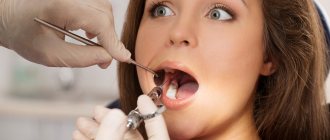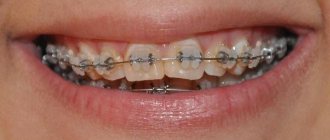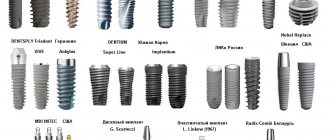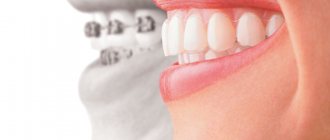Periodontitis is an unpleasant thing, but not fatal. According to dental research, signs of periodontitis or periodontal disease occur in literally everyone during their lifetime. The outer part of the gums is the most delicate part of the epithelium in the body. Among dental diseases, only caries is more widespread.
Periodontitis is a broad group of inflammation of the gums. The cause of such damage is deposits on the teeth, which especially worsen with age. Swollen parts of the gums (especially between the teeth) begin to bleed. Hirudas are a highly effective remedy for normalizing metabolism, improving blood circulation and saturating the blood with useful substances.
The effectiveness of dental treatment with leeches
First you need to decide what degree of periodontitis requires the attention of a doctor. The following indicators are used for this:
- degree of gum swelling;
- the amount of blood that is spat out when brushing your teeth;
- heaviness of breathing, intensity of bad breath;
- thickness of plaque on the teeth and tongue.
These indicators themselves are not absolute, but show the general tone of the gums and how much, in addition to basic measures, auxiliary application with leeches is required. Regardless of severity, the optimal duration of productions never exceeds two weeks.
Indications for the procedure
Most types of hirudotherapy are relatively ancient. In modern dentistry, leeches were prescribed relatively recently, but they have already proven themselves to be highly effective and simple. This therapy completely reduces or significantly alleviates a lot of the symptoms of periodontitis. Among them:
- loose gums;
- their swelling;
- the cyst shrinks or almost completely resolves;
- inflammation is significantly reduced;
- gums generally become much less sensitive;
- Morning bleeding gradually disappears.
Purulent periodontal disease is successfully treated by applying leeches. Restoring normal blood circulation eliminates necrosis and the possibility of blood clots. All effects of therapy are already visible in the third session. Typically, periodontists recommend about a dozen placements. The effects of using leeches are visible within three months after stopping the procedures.
On the relevance of hirudotherapy in modern dentistry
208
Some treatment methods, successfully practiced at a time when scientific medicine was practically absent, were undeservedly forgotten for a while.
After modern medicine confirmed and explained their therapeutic effect, many of them began to return to the practice of modern doctors and be used in complex treatment.
In the 70s of the last century, this also happened with medicinal leeches.
About the methodology in general terms
The therapeutic effect of medicinal leeches is due to several factors:
- By bloodletting. Each leech drinks 5-15 ml of blood.
In addition, after a hirudotherapy session, a small amount (up to 30 ml) of blood continues to be released through the wound for 6-16 hours. This bloodletting normalizes blood pressure, if it is elevated, and removes toxins along with the blood. - Positive effect of biologically active substances, which are part of leech saliva secreted during sucking. Their number reaches several dozen.
The main one is hirudin, which blocks thrombin, resulting in reduced blood clotting.This has a therapeutic effect for thrombophlebitis, myocardial infarction, angina pectoris, hemorrhoids, arthrosis, muscle spasms, as well as some diseases of the oral cavity.
- Activation of the body's immune response in response to a bite, blood loss and penetration into the blood of bioactive substances contained in the secretion of a leech.
Thanks to these factors, hirudotherapy:
- reduces or completely eliminates pain;
- reduces inflammation;
- dissolves formed blood clots and prevents the formation of new ones;
- reduces the risk of cardiovascular diseases due to anti-atherosclerotic properties;
- activates tissue regeneration;
- strengthens the immune system.
The duration of a hirudotherapy session depends on the disease and can last up to 20 minutes or more. The time of sucking one leech ends after it is saturated and spontaneously falls off, or forcibly - by applying a swab dipped in iodine or alcohol to the worm's sucker. A leech used once is not reused; it is killed by placing it in chloramine.
Hirudotherapy is an absolutely safe procedure. Transmission of infection through a medicinal leech is practically excluded, since there is no pathogenic flora in its intestines due to cultivation in artificial conditions and keeping it hungry for a long time.
The consequence of a hirudotherapy session may be redness and swelling at the site of the bite, which may appear on the second or third day after treatment and will go away on its own over time.
Indications and contraindications
Hirudotherapy in dentistry is used as an additional means in the therapeutic, orthopedic and surgical treatment of diseases of the teeth, soft and hard tissues of the oral cavity.
It allows:
- get rid of pain, inflammation and swelling;
- increase blood fluidity, improve its microcirculation, normalize metabolism in the tissues of the face and jaws;
- accelerate the healing of the labial border and mucous membrane of the RP with aphthous stomatitis, lichen planus, leukoplakia;
- quickly cope with inflammatory diseases of the oral cavity - alveolitis, periodontitis, periodontitis, peri-implantitis;
- reduce the severity of diseases of a dystrophic nature (periodontal disease);
- cope with glossalgia (tongue disease);
- increase the effectiveness of treatment of pathology of the trigeminal and facial nerves (neuralgia, paresis).
Contraindications for hirudotherapy, regardless of the type and location of the disease, are:
- pathologically low blood clotting of the patient;
- cancer diseases;
- pregnancy.
Stages of the procedure
Hirudotherapy in dentistry is carried out in several stages.
Use depending on the clinical case
Hirudotherapy is useful for various types of dental diseases that require therapeutic and surgical treatment. It is used in combination with other treatment methods indicated in a particular case.
The inclusion of hirudotherapy in the treatment process contributes to faster and better healing.
Inflammation of the maxillofacial area
Of the inflammatory processes of the maxillofacial apparatus, periostitis, periodontitis and alveolitis are most often diagnosed.
In these diseases, local inflammation with hyperemia and edema is accompanied by intoxication of the body, leading to elevated temperature, poor sleep, and decreased performance.
Hirudotherapy in combination with other therapeutic measures allows you to cope with the disease much faster.
Before using leeches, the source of inflammation is treated, the nature of which depends on the type of disease. During the first session, leeches are placed for 5-10 minutes.
In the future, the sucking time can be increased to 30-40 minutes. The course of treatment is 3-5 sessions. During one session, 1 or 2 leeches are used.
A positive effect is noted after the 1st or 2nd session. Pain decreases or completely disappears, swelling and hyperemia decrease.
Periostitis
Before hirudotherapy, the abscess is opened, the pus is removed and the source of inflammation is treated with antiseptics. The bite site is located on the transitional fold along the edges of the incision.
Leeches are applied at the same visit immediately after treatment or the next day if the amount of pus discharged is large.
Periodontitis
Before using leeches, the root canal is opened and treated according to the generally accepted method. One or two leeches are placed on the transitional fold of the gums in the area of the root apex for 5-10 minutes. The number of sessions depends on the extent and severity of inflammation and varies from 1 to 5. Sessions are performed every day or every other day.
Alveolitis
First, the socket of the extracted tooth is inspected, cleaned of necrotic tissue and granulations, and washed with antiseptics. Leeches are placed for 5 minutes on the transitional fold in the projection of the extracted tooth or on the edge of the socket. Carry out 3-5 sessions every other day or every day.
Aphthous stomatitis
Aphthous stomatitis is an inflammation of the mucous membrane of the oral cavity in the form of aphthae - small round ulcers. Hirudotherapy is used in the treatment of recurrent chronic aphthous stomatitis.
Treatment with leeches is used in complex therapy together with painkillers, desensitizing and immunomodulating drugs, as well as vitamins and hormones.
Hirudotherapy for aphthous stomatitis can be used both for treatment and prevention (between exacerbations). It is preceded by reorganization of the RP.
For treatment, leeches are placed in the area of canker sores; for prevention, they are placed in the places where they usually form. One or two leeches are used per procedure.
Treatment eliminates the pain symptom, accelerates the healing and epithelization of aphthae, increases the period of remission, but there is no complete cure for the chronic disease.
Melkerson–Rosenthal syndrome
This pathology manifests itself in three symptoms - non-inflammatory nature - swelling of the border of the lips and oral mucosa (macrocheilitis), glossitis, diseases of the facial nerve (paralysis, paresis, neuritis).
The positive effect of hirudotherapy for this disease is noted in 70% of cases already at the first sessions. Simultaneously with treatment with leeches, drug therapy is carried out.
Periodontal diseases
A number of studies conducted in relation to inflammatory periodontal diseases - chronic periodontitis and gingivitis of various forms and degrees - have established that hirudotherapy, applied after the removal of dental plaque and anti-inflammatory therapy, significantly improves the condition of the periodontium.
Already at the second or third session, there is an improvement in the general condition of the patients, the discharge from the periodontal pockets decreases and then completely stops, the wounds are epithelized, and the bleeding of the gums stops.
With the help of radiography, compaction of the interdental and interroot septa is noted, and the volume of bone tissue increases slightly.
The video shows how leeches are placed in the oral cavity.
Price issue
The cost of hirudotherapy depends on the number of leeches supplied. One worm costs the patient about 1000-1500 rubles, each additional one costs 300-400 rubles. They charge 300-500 rubles for a consultation.
Contraindications to the procedure
All diagnoses that require the application of worms as part of hirudotherapy have a common criterion. Procedures cannot be performed with a critically low hemoglobin indicator, anemia, or hemophilia. It is prohibited to use such techniques on cancer patients. You should not apply leeches to pregnant women, women during lactation, or small children.
Age requirements are partly added to the standard requirements. After all, periodontitis and periodontal disease are largely diseases of mature and elderly people. Over the years, blood clotting may worsen, and the number of allergic reactions may increase. Therefore, treatment of dental problems with leeches should be carried out only after a particularly thorough examination by the treating periodontist.
Indications and contraindications
Hirudotherapy in dentistry is used as an additional means in the therapeutic, orthopedic and surgical treatment of diseases of the teeth, soft and hard tissues of the oral cavity.
It allows:
- get rid of pain, inflammation and swelling;
- increase blood fluidity, improve its microcirculation, normalize metabolism in the tissues of the face and jaws;
- accelerate the healing of the labial border and mucous membrane of the RP with aphthous stomatitis, lichen planus, leukoplakia;
- quickly cope with inflammatory diseases of the oral cavity - alveolitis, periodontitis, periodontitis, peri-implantitis;
- reduce the severity of diseases of a dystrophic nature (periodontal disease);
- cope with glossalgia (tongue disease);
- increase the effectiveness of treatment of pathology of the trigeminal and facial nerves (neuralgia, paresis).
Contraindications for hirudotherapy, regardless of the type and location of the disease, are:
- pathologically low blood clotting of the patient;
- cancer diseases;
- pregnancy.
Direct indications for the use of hirudotherapy in dentistry are the following conditions:
- Pain syndrome
- Severe inflammation and swelling
- Changes in blood viscosity and fluidity
- Disturbance of microcirculation and metabolic processes in the maxillofacial area
- Diseases of the oral mucosa (leukoplakia, lichen planus, stomatitis)
- Inflammatory diseases (alveolitis, peri-implantitis, periodontitis, periodontitis)
- Dystrophic pathologies (periodontal disease)
- Neuralgia of the facial nerve
- Paresis of the ternary and facial nerves
Hirudotherapy can achieve high positive results in the treatment of dental pathologies due to its mechanisms of action on the body:
- The reflex action is achieved due to the fact that the leech finds and bites only biologically active points. The mechanism of this action is similar to the work of acupuncture.
- The mechanical effect of using medicinal leeches is to suck out “old” blood and stimulate the process of hematopoiesis. Also, due to the outflow of lymphatic fluid, local and general immunity is stimulated.
- The biological effect of hirudotherapy is that at the moment of a leech bite, it injects about two hundred biologically active substances contained in the secretion of its saliva.
This is interesting: Prevention of dental caries
It is through these enzymes that dentists who use hirudotherapy in their practice manage to achieve high recovery rates. The main biologically active substances that play a major role in the treatment of pathologies of the maxillofacial area can be called:
Hirudin is one of the most powerful anticoagulants. Prevents the formation of blood clots and dissolves existing clots (which is not always possible with modern medicines). It normalizes blood viscosity and fluidity, thereby normalizing microcirculation around the area of pathology. Hirudin itself consists of a large number of amino acids, which in turn have an extremely long-lasting effect on the body as a whole.- Hyaluronidase increases the permeability of tissues and vascular walls, in other words, other medicinal substances penetrate more easily and are fully effective. This is why treatment with medicinal leeches is so highly effective.
- Destabilase is a biologically active substance somewhat similar to hirudin. It has an anti-sclerotic effect, increases the permeability of the cell membrane, thereby significantly improving the transport of oxygen and nutrients. Its distinctive feature is that it easily breaks isopeptide bonds in all proteins without exception.
- Orgelaza received the nickname “builder” for its ability to build new and strengthen damaged blood vessels.
- Collagenase is an essential biologically active substance that can break down scars.
Thanks to the above enzymes, dentists and hirudotherapists are able to achieve the highest therapeutic effect. The hirudotherapy procedure itself for diseases of the maxillofacial area takes about 10–20 minutes. For a hirudotherapy session, only sterile medical leeches are used. As a rule, leeches are placed on the oral mucosa. Before the procedure, the oral cavity is sanitized, and several days before the procedure it is recommended not to use ointments that emit a strong odor. Before placing the leeches, the doctor massages the intended bite area with his fingers in order to increase blood flow. The medical leech is seated in a sterile syringe and remains in the syringe placed at the bite point throughout the entire session. Upon completion of the procedure, the doctor usually removes the leeches himself, since keeping them on the mucous membrane for a longer period of time is not always effective. A sterile swab is applied to the bite site, which can be removed after half an hour. Light bleeding after the session can last up to 8 hours, but the patient should not worry about this, because the outflow of blood and lymph only stimulates the immune system.
Medical leeches in dentistry are used in the treatment of surgical, orthopedic and therapeutic pathologies. Doctors usually combine hirudotherapy with surgical and drug treatment.
Seek help from the “little doctor” now, preventing the development of pathology.
How does the procedure work?
As expected in therapy, the hirudotherapist applies the worm to the inflammation on the gum. The leech bites into a tiny two-milliliter wound, simultaneously sucking out blood and injecting an anticoagulant. Due to their small size and the collection of only five milliliters of blood, hirudes are ideal when it comes to targeted treatment of gums. The secretion produced by a leech contains a unique microflora, and it is also practically sterile if the leech is grown in proper conditions.
As soon as the parasite gets drunk and comes unglued, it is simply removed. The bite site is carefully wiped with a swab. Normally, it can bleed for up to nine hours. If the bleeding does not stop after this period, it is allowed to use a hemostatic agent. Eating and drinking are allowed already in the third hour after the hirudas have been removed.
Although the course lasts about three months, it is recommended to repeat it after several years, while at the same time carefully observing oral hygiene and following an appropriate diet. Periodontal disease can return with a general deterioration in metabolism, even in more severe forms than before, which is why it is recommended to check your gums at least annually.
How to place leeches on gums
Good day! My name is Khalisat Suleymanova - I am a herbalist. At the age of 28, I cured myself of uterine cancer with herbs (read more about my experience of recovery and why I became a herbalist here: My story). Before being treated using traditional methods described on the Internet, please consult with a specialist and your doctor! This will save your time and money, since the diseases are different, the herbs and treatment methods are different, and there are also concomitant diseases, contraindications, complications, and so on. There is nothing to add yet, but if you need help in selecting herbs and treatment methods, you can find me at my contacts:
Khalisat Suleymanova
Instagram page: instagram.com/fitoterapevt1
Telephone: 8
Mail:
I consult for free.
Hirudotherapy has found application in many areas of medicine, including dentistry. When treating gums with leeches, enzymes enter the blood system, which have a positive effect on the body. Blood-sucking worms help with diseases such as glossalgia, periodontitis, stomatitis, gingivitis.
The benefits of hirudotherapy
The saliva of blood-sucking individuals includes the component hyaluronidase, which acts on hyaluronic acid. This connection is a kind of “cement” for the connective epithelium and helps restore normal bleeding and lymph outflow. Positive effects of hirudotherapy:
- reduces swelling;
- eliminates pain;
- inhibits inflammation;
- promotes the resorption of blood clots,
- improves blood circulation and blood clotting.
The validity and feasibility of using the methodology lies in the results obtained:
- antithrombic;
- thrombolytic;
- antiatherogenic;
- immunostimulating;
- anti-inflammatory;
- bacteriostatic;
- anesthetic;
- restorative.
Dental treatment with leeches
After eliminating irritating factors: removal of dental calculus, anti-inflammatory therapy for gingivitis and periodontal disease, general therapy, up to three individuals are given. Worms are located in the area of the gingival papillae, intermediate or alveolar zone of the gums. The duration of therapy lasts 10–14 sessions every day. The bleeding time is 24 hours. Complete healing occurs on the third day, patients observe noticeable improvements.
Why the leech does not stick to the gums:
- The medicine worm is not hungry.
- The blood-sucking individual is sick.
- Drinking alcoholic beverages, coffee, tea before procedures.
- Use of strong-smelling products before sessions: eau de toilette, perfume, gels, deodorants.
- Worms bite thin skin well; it is more difficult for them to do this on rough skin.
- The quality of the blood is of great importance. If the skin has absorbed chemicals or medications, this can repel blood-sucking worms.
- If the skin is covered with lush vegetation, then hair should be removed before the session; it is difficult for animals to bite such an area of skin.
How to attract leeches:
Simple ways to treat complex diseases:
- Before sessions, you need to wash the skin area with plain soap or wipe with alcohol, and then rinse with warm water.
- Wet the placement point with a sweet solution.
- Make a small puncture with a needle, which should be treated with alcohol; a drop of blood will attract the worm.
- The English method of applying the worm relieves the patient of pain. To do this, you need to put any cotton fabric around the placement point. Then pour water into a glass, place the blood-sucking individual there, tip the glass over, slowly releasing the liquid.
Treatment of dental cysts with leeches
A dental cyst is a small capsule with liquid that includes cholesterol molecules. Usually it does not make itself felt to a person; it is detected by x-ray. The cause of cyst formation is periodontitis, which is a consequence of complications of caries, tooth trauma, and poor treatment of dental canals. Poor treatment leads to the formation of a cyst.
In one of our previous articles, we talked about how to cure a cyst on a tooth using folk remedies, and the use of leeches is another effective method of combating this kind of tumors in the oral cavity. Therapy for cysts with blood-sucking worms is relevant when inflammation develops, the tooth hurts when biting, the gums swell, and gumboil occurs.
Use of worms:
- stimulates the immune system;
- thins the blood;
- relieves pain;
- kills harmful microorganisms.
Is it dangerous to put leeches on bleeding gums? It is not recommended to carry out such procedures on your own at home. The placement of leeches is carried out under the supervision of a hirudotherapist.
Health to you!
Useful articles:
zdravoline.info
